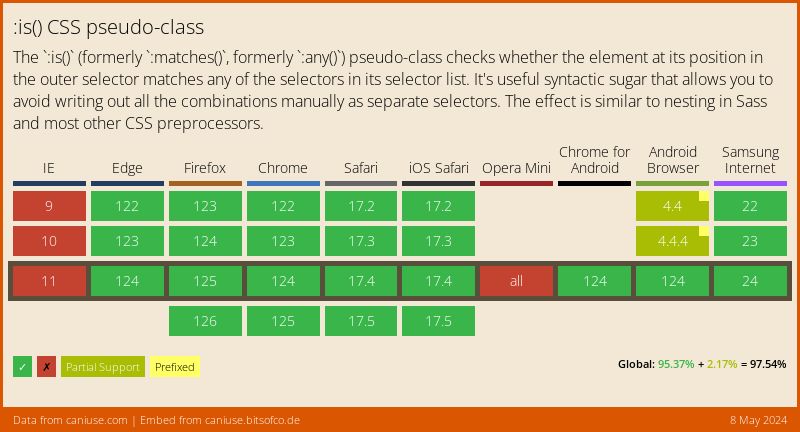Make repetitive CSS compact using :is() pseudo-class function
The CSS has many experimental features, that if used cautiously, can be proven very handy in simplifying things.
For instance, the :is() CSS pseudo-class function. What this function does is it takes a selector list as its argument and selects any element that can be selected by one of the selectors in that list. This is useful for writing large selectors in a more compact form.
So, if you’ve following CSS at hand…
header p:hover,
main p:hover,
footer p:hover {
color: red;
cursor: pointer;
}
Here, p:hover is “common” across all three selectors. The :is() function can be used to shorten this to the following.
:is(header, main, footer) p:hover {
color: red;
cursor: pointer;
}
As you can see, it looks more concise and refactorable now.
But as I said, this function is an experimental one. So, not every browser has support for the same. So, to mitigate this you can use fallback functions for the same like *-any() or :matches().
:-webkit-any(header, main, footer) p:hover {
color: red;
cursor: pointer;
}
:-moz-any(header, main, footer) p:hover {
color: red;
cursor: pointer;
}
:matches(header, main, footer) p:hover {
color: red;
cursor: pointer;
}
Here is the list of all browsers that supports :is() currently.

👋 Hi there! This is Amit, again. I write articles about all things web development. If you enjoy my work (the articles, the open-source projects, my general demeanour... anything really), consider leaving a tip & supporting the site. Your support is incredibly appreciated!



